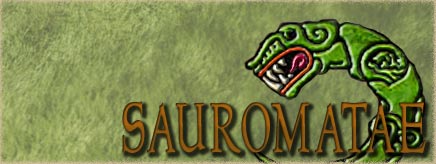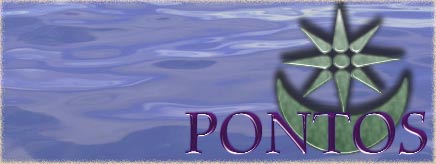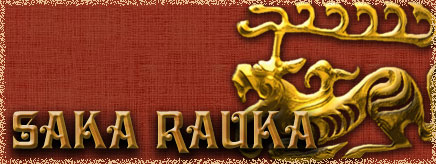Greetings Europa Barbarorum fans.
Today we are proud to present our third and last preview of the Boii, the oldest of all Celtic peoples in Europa Barbarorum.
In this preview's history section, we will show the full description of one of the Boii provinces, and just part of the description of their homeland, Boiotergion. In addition, we will show you some interesting facts regarding the Boii relationship with northern Italy, pertaining their common artwork.
In the unit section, we will show three new units: the Gargokladioi or "Fierce swords", freemen that along with the Uisusparos Kingetoi form the bulk of the Boii battleline; the Mogeto Epathias or "Mighty knights", heavy celtic cavalry and bodyguards of the Boiorix; and the dreaded Gaisatoi or "Spearmen", Gallic mercenaries that sell their famed swords to the Boiorix.
Enjoy!
The Provinces
Herkunion
Introduction:
In early spring, over-burdened jacks descend miles, a train far beyond the alpine track, and well onto broad plains drained by the gentle flow, the Thracians name after their god; Istros. Where otherwise the Celts call this watercourse Dānu. Here the traveler baths before crossing over to the northern bank, much like the ancient Volcae. Not far beyond this watercourse the verge gives way to the tallest, deepest, and darkest weald in all of Europa. The natives know this wooded realm as Hercynian, Orkýnian or the 'great Oak Forest.' It is from this primeval and awe inspiring timberland that the province of Herkunion takes a name. Its said that when Rome was young, with great numbers and a want for new land the Volcae seized, took root in it's fertile loam, and raised up the Textosages as the mighty oak; to tower over this place. They were a powerful and honorable nation, practiced by the rule of law and well-schooled in the deadly arts of war. As well, they were accustomed to the benefits derived from commercial enterprise; the reason travelers seek out their towns men, to trade for cattle and for gold. Above all else they trade for amber; glassy tears the gods once wept in joy. Yet, time's fullness, untold deprivation, dearth, and primitive durabilities shaped this rustic nation, so those who once crossed over water to rule, have now been mastered by the very soil they claimed for hearth and home.
Geography:
Herkunion roughly corresponds to historic extent of lower Bavaria and western Bohemia of the Czech Republic. This province is bounded on the south by the Danube and drained by the southward flowing Naab, Waldnaab, Vils, and Regen rivers. The dominate geographic features are the upper Elbe and Gäuboden Lowlands; as well as the Franconian, Bavarian, and Bohemian Uplands. Overall, these features define two discrete geographic zones; river basins and mountainous uplands. The vegetation is largely related to these major geomorphology settings, whereas the river basin is dominated by grassland and small relatively isolated deciduous forests. In contrast, the densely wooded upland area collectively known as the Hercynian Forest includes mixed deciduous and conifer forests. Herkunion has a somewhat mild climate with precipitation somewhat evenly distributed. However, spring and fall are somewhat short, the summers typically range from mild to warm, and the winters are normally cold.
Social and Political Organization:
The social and political organization of Herkunion is characterized as a system of tribal chiefdoms associated with but not tied to the Boii Confederation. They represent hierarchal societies that displayed clear evidence of stratification. As a multilayered ethnicity these communities seem to have shared a somewhat common set of legal, religious, and militaristic customs. Overall, these tribes were informally administered by an ill-define religious cast and ruled by an assembly of the nobles, which represent descendant from a powerful equestrian class.
Proto-History:
Because of archaeological survey and excavation the culture or proto-history of the Herkunion region is understood to some extent. In the 10th century BC with the Hallstatt culture appears to have been well established throughout the Upper Danube; extending north into lower Bavaria. This archaeological construct was characterized by communities associated with the late Middle Bronze Age Tumulus culture that was overlain by a local version of the pervasive Late Bronze Age Urnfield culture. In this context the Hallstatt culture represented a metallurgical tradition, centered within the upper Rhine and Danube drainages, and an extensive regional exchange network. This expression was based on agriculture and was characterized by a range of small settlements together with extensive cremation cemeteries; crowned by large fortified towns that served as regional centers. Referred to as oppidum, the two best examples can be found at Alkimoennis in Germany and Rēdiodūnon in the Czech Republic. Both were established as regional centers in the 6th century BC and continued into the late Latent period.
The Alkimoennis oppidum near Kelheim is situated on a limestone plateau called Michelsberg, which jets out between the Danube and Altmühl rivers. This oppidum is located within an important iron mining and manufacturing district in lower Bavaria. Although established in the 6th century BC major fortifications that eventually enclose an area of 630 ha, were not constructed until the 2nd century. These mounded timber, limestone and earthen walls extend about 10 Km, were 11 m wide and 2 m high and also included an interior Acropolis that covered about 60 ha. Numerous Late Bronze and Early Iron age tumulus cemeteries have been found near Alkimoennis. Based on the associated funerary assemblages which include elaborately decorated urns and bronze figurines, such as the Steer of Michelsberg, these burials appear to represent the local ruling elite. A number of bronze and silver locally made coins have been recovered, along with a mold from which blanks were cast. The Stradonice site in western Bohemia, located on a tall hill called Hradiste, situated between the Berounkou River and Habrovým Creek, appears to be the historic Rēdiodūnon oppidum. The fortified area encompasses an area of about 90 ha and is subdivided into several large residential and open areas and an Acropolis, located on the hill top, in the southwestern part of settlement.
There is little doubt that the late Hallstatt followed by the Latene regional centers, general material culture and the persistent use of Celtic placenames indicate the formation of Volcae tribes in lower Bavaria, Bohemia, and Moravia in the latter half of the 1st millennium BC. However, in Commentarii de Bello Gallico, Caesar relates a tradition that the 'Volcae Tectosages crossed over, seized those parts of Germania around the Hercynian Forest that were the most fruitful, and settled there.' This seems to correspond to Livy’s account that Segovesus, the apparent leader of the Volcae, established a Celtic state within the western part of the Hercynian Forest in the early 6th century BC. Furthermore, Livy and Strabo tell us that Volcae was used only as a generic term that denoted an eastern Celtic or Noric ethnicity, while the large polity centered on Bohemia was known as the Boii, a large tripartite confederation controlled by the Arecomici, Tectosages, and Tolistoes tribes. Although these Celtic chiefdoms continued unabated, the upper Danube and Bohemia became the epicenter for widespread demographic disruptions that resulted in series of large-scale migrations into southern Gaul, northern Italy, southwest Poland, the Middle Elbe basin, and the Balkans and other points beyond.
For example subtribes of the Arecomici are found in southern Gual, the Tectosages in southern Gaul and Anatolia, and the Boii appear in northern Italy and Anatolia. Cornacates, Belgites, and Celegeri initially seem to have been minor septs of the Boii that due to eastern expansion later joined with Illyrian, Thracian, and Dacian communities to form the powerful Scordisci confederation in the lower Danube basin. Other relatively minor Volcae tribes that expanded east included the Arabiates, Eravisci, Teurisci, and Anartes. In contrast, the Gaesatae appear to have been a Volcae warrior class or society centered on the region that included the upper Rhone and Danube. Composed of young landless aristocratic men, this military organization transcended normative tribal affiliations, and seems to have been used in a fashion similar to that the medieval Irish Fianna. Nonetheless, these territorial annexations soon drew the Volcae tribes into direct conflicts with the increasing authority of Hellenistic powers and the Roman state. Therefore, the tide of Volcae expansion was stemmed within a decade following the three-day battle at Telamon in 225 BC, while eastern Celtic culture experienced a rapid and irreversible decline and collapse after the disastrous Cimbric migration fell upon this region in 114 BC. Due to deteriorating environmental and economic conditions and the increasing military pressure posed by a growing Swabian tread in the lower Elbe basin, nearly all of the major oppida north of the Danube were abandoned by 40 BC. Finally, the migration of the Swabian Marcomanni into the upper Elbe river basin marks the effective disintegrated of the Boii confederation in Bohemia and lower Bavaria.
Strategy:
Herkunion was an important agricultural, mining, and manufacturing district that controlled secondary trade routes that connected the upper Danube basin to the lower Elbe region. This province was also a critical hub of the Latene culture and represented the western extent of Boii tribal homeland. For the Boii faction to exert hegemony over continental Europe, control of this province is indeed impetrative, while its domination by the opposition will no doubt reduce the Volcae to a state of vassalage.
Celtic Art in the Fourth Century: Influences from the Po Valley
The development of Celtic art styles in the fourth century BC have been variously characterized. Earlier attempts used the rich 'princess's' grave from Waldalgesheim, near Bonn, as a type assemblage against which to compare fourth-century products, and some observers even went so far as to propose a 'Waldalgesheim master'. Others have been content with a less constricting terminology, referring to the development as an Early Free Style. However, the more descriptive phrase, Vegetal Style, best captures the principal and distinctive characteristics of the products of the period, since the overriding motif is the running tendril or linked band of lyre-palmettes. Animals and human heads recede into the background. They do not entirely disappear but rather lurk in the vegetation, from which, disguised, they occasionally peer out.
The centre of innovation is no longer the Rhine-Moselle region but the Marne, Switzerland, Hungary, and the Po Valley, and it is the relationship of the last with the broad northern zone that raises interesting questions. It is now widely believed that the Celtic groups in the Cisalpine region, notably the Boii and the Senones, were responsible for integrating Graeco-Italic ideas with Celtic and transmitting the result back to the innovating centres north of the Alps. This interpretation would imply that close social links were maintained between the Celts who had emigrated to the south and those who remained in their northern homelands.
(Extract from Cunliffe, The Ancient Celts.)
The Warriors
Gargokladioi
" style="float:left;margin:0 10px 0 0;" />
(Gar-go-klad-e-oy. ‘Fierce Swords’). Called upon when war looms, the Gargokladioi answer most readily. Hailing from all over the Celtic Europe, these are free members of the tribe or state who choose to follow the path of the warrior. They wield swords that they have typically won in single combat, or taken from a better equipped fallen foe as few are truly wealthy enough to have one made themselves. While some hire themselves out for pay, others honestly fight to protect their own, with the prospects of gaining fame and riches for themselves in the process. They strike first with the javelin, and then charge in with swords leading the way. A staple warrior in any Celtic army or raiding force, these swordsmen earn their worth by having the martial skill and morale to remain in combat for great length of time against similarly armed opponents. They are dependable, swift warriors that are welcomed by any general.
Historically, the swordsman in a Celtic army was not the most common opponent one would face in the Celtic world. To date more spears have been found in Iron Age warrior burials, yet the sword can certainly be seen as a status weapon of sorts that successful, or wealthy warriors, would keep with them. The sword would have been used as a secondary weapon if one had a spear or a clutch of javelins to throw. Still, this weapon must have carried much significance in warfare and to those that were fortunate enough to possess one. One such Gaulish word for ‘sword’, klad-, could possibly have given rise to the word gladius.
Mogeto Epathias
" style="float:left;margin:0 10px 0 0;" />
(Mo-get-oy Ey-pat-hi-as, 'Mighty Knights'). The nobility of the Celtic lands often chose to go mounted after the chariot declined as the main vehicle of nobility when going to war. The Mogeto Epathias are an Eastern Celtic version of the Gallic Donno Eporedoi, and are just as deadly. They come to battle with spears for the charge and swords for melee. Their armor is hardened leather for protection, and in later eras they are seen with suit of chainmail and increasingly longer slashing swords unique to Celtic cavalry. Helmets include Montefortino helmets, Agen Port helmets for the later periods, and hardened leather types. Portions of their panoply are unique to the eastern areas of Europe where the Celts held sway and settled, such as their Vegetal (or Waldalgesheim) Style scabbards that are among the most ornate and detailed scabbards in the Iron Age. All together cavalry is a staple of Celtic warfare and none can be seen to have such a glorious and prestigious reputation as these cavalrymen. Their morale is second to none and given that they stand to lose the most in the event of a defeat, are highly motivated. First on and last off the field, they leave a lasting impression on the few who survive an encounter with them.
Historically, these men were from the uppermost level of Celtic society, being powerful and very rich they could afford the finest things in life. While they wore gold torcs, bracelets, rich clothes and other finery they were certainly not decadent fools, their position was gained by and maintained only through years of constant vigilance and military prowess, something they honed through daily training. Given the time taken to rise to such a level, most were middle aged men in the prime of life but toughened from the many challenges they have faced, this made them less reckless or eager for glory than the younger warriors and a formidable foe. To bolster their authority and protect themselves in battle they would maintain a retinue of vassals and clients, such as the famed Solduroi of the Aquitanians, , the Kombaragoues, and others who they would pay to equip from their own pockets. It was the expansion of this vassalage system that lead to the formation of the well armed professional armies of the late Celtic era and the decline of the freeman class.
Gaisatoi
" style="float:left;margin:0 10px 0 0;" />
(Gaisatoi, 'Those of the Javelin'). The Gaisatoi are great shock unit intended to lead an attack, as well as experienced crack infantry excelling in skill and performance. Due to their ritual nudity, they strike fear into the hearts of the enemies unaccustomed to their brazen display. Though true professional warriors would master many weapons and fight styles, the Gaisatoi are most renown for their skill with the spear and are foremost masters of the heavy javelin. Many of them fight naked in battle as they are certain that their gods of war are watching and protecting them from above. Should they fall in glorious battle, then they will resume their fighting and enjoy feasting into the afterlife alongside their comrades. Richly equipped through successful wars and many battles, the Gaisatoi are professionals in every sense of the word, and led by their own kings, they constitute some of the most feared warriors to be found in Gaul.
Historically, the Gaisatoi are somewhat of an enigma concerning the true spelling of their name. In Latin they are called Gaesatae, and Polyibios stated that their name referred to them as mercenaries. However, etymology in Gaulish is a different matter. The Gallic prefix gaiso- is most often identified with javelins, while words like lancia, most often equate with the lance and spear. The gaison is the probable ancestor of the Roman pilum, with the gaison likely being a heavier javelin intended for maximum damage to enemy formations and men. Due to Lain spelling and what is known of Gaulish, likely versions of their name could include Gaesatoi, Gaisateis or Gaisatis, either one conveying the same overall meaning. In battle the Gaesatae are know most famously from their victory the Romans at Faesulae, where they were not mentioned as being naked and were probably clothed, and their great defeat at Telemon where the terrain features forced them to disrobe, both in 225 B.C.
Signature Banners
In case you haven't done so already, show your support for Europa Barbarorum in style with these three new signature banners, featuring the mighty Boii! Courtesy of Gustave.
We hope you have enjoyed this third preview of our new Boii faction in Europa Barbarorum II.
Please note that unless stated otherwise, ALL pictures, names, descriptions and particularly animations shown in our previews are works in progress. We continue to improve on all parts of EB, and we will continue to do so long after our initial release.
Since some areas where these news items are posted cannot handle wide images, we appreciate your restraint from quoting full-size images.
As always, if you have questions or comments, the best place to post them is here, where the EB team is most active:
Europa Barbarorum ORG forum
Europa Barbarorum TWC forum
A special thanks to cmacq for the province description, Tux and JMRC for their excellent models and renders, Gustave for his wonderful unit skins and artwork and screenshots, Power2the1 for the unit descriptions, and to Power2the1, Oudysseos, Paullus, cmacq and Anthony for the historical info and text work.
Have a great day
The Europa Barbarorum team.


































 Reply With Quote
Reply With Quote















Bookmarks